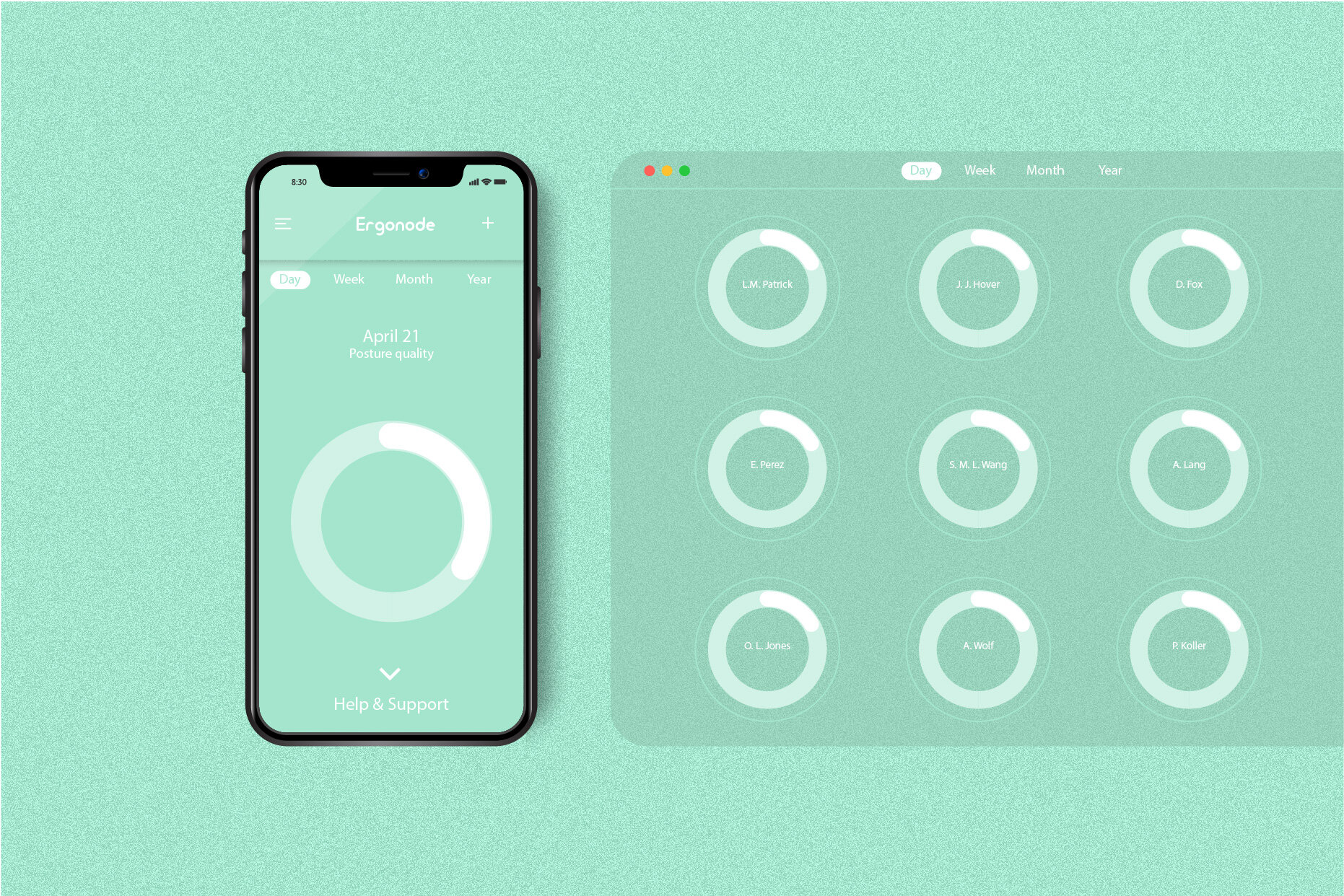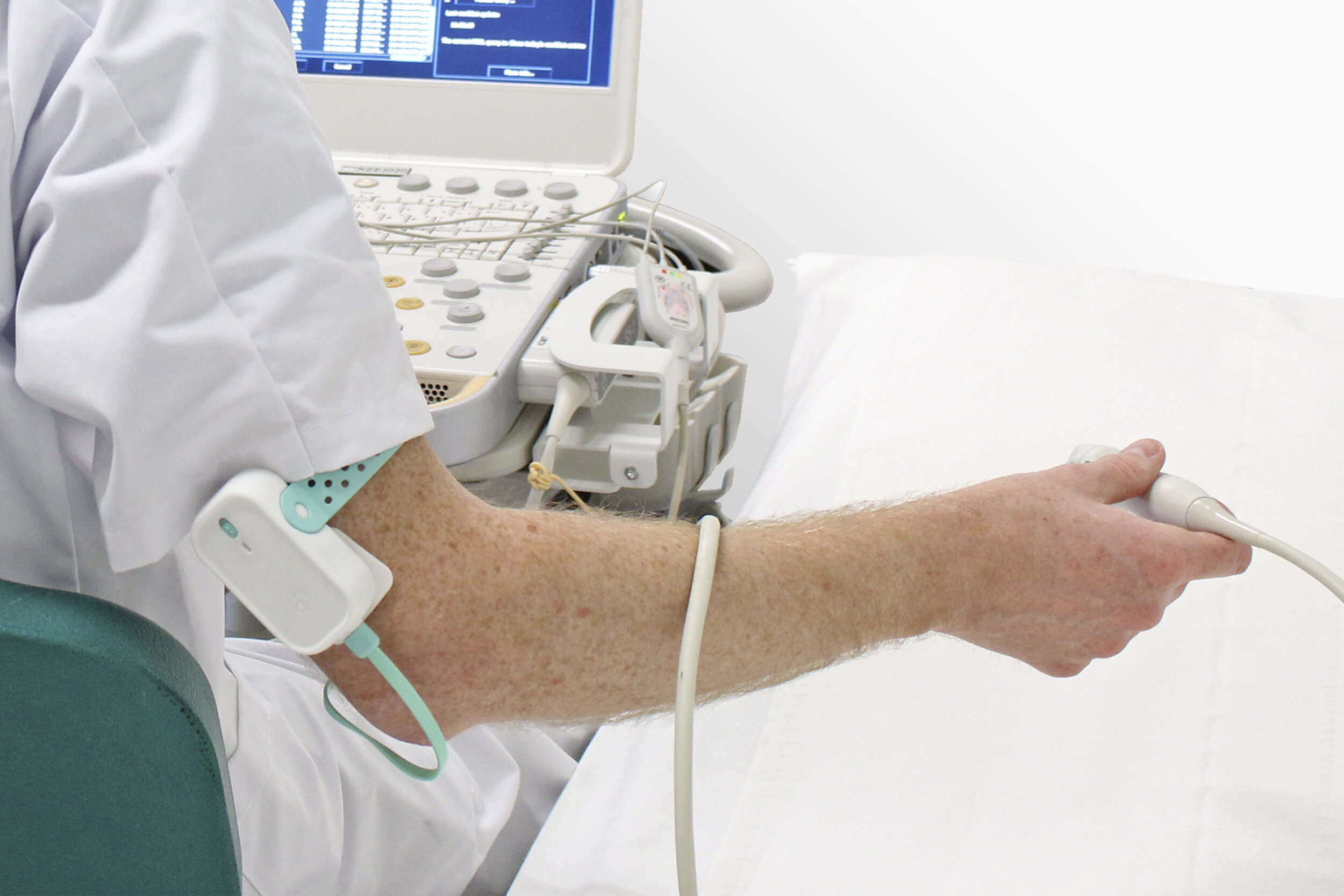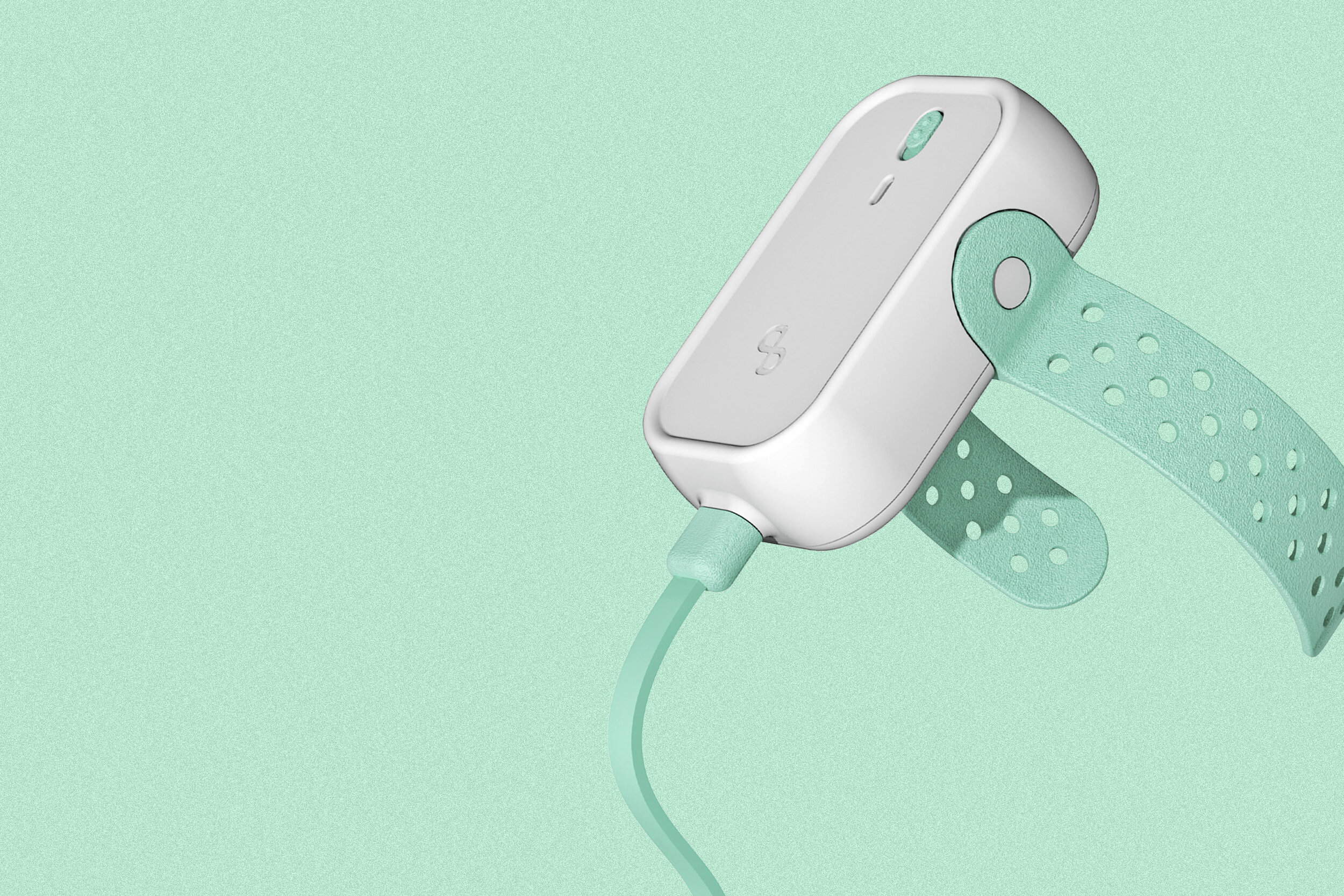
Wearable technology for healthcare professionals
-
Ergonode is a wearable solution designed to support ultrasoaund professionals on achieving better posture habits during their daily routine at the hospital.
-
Juan Restrepo, Industrial design, UX/UI, Research, prototyping
In-house design by USONO
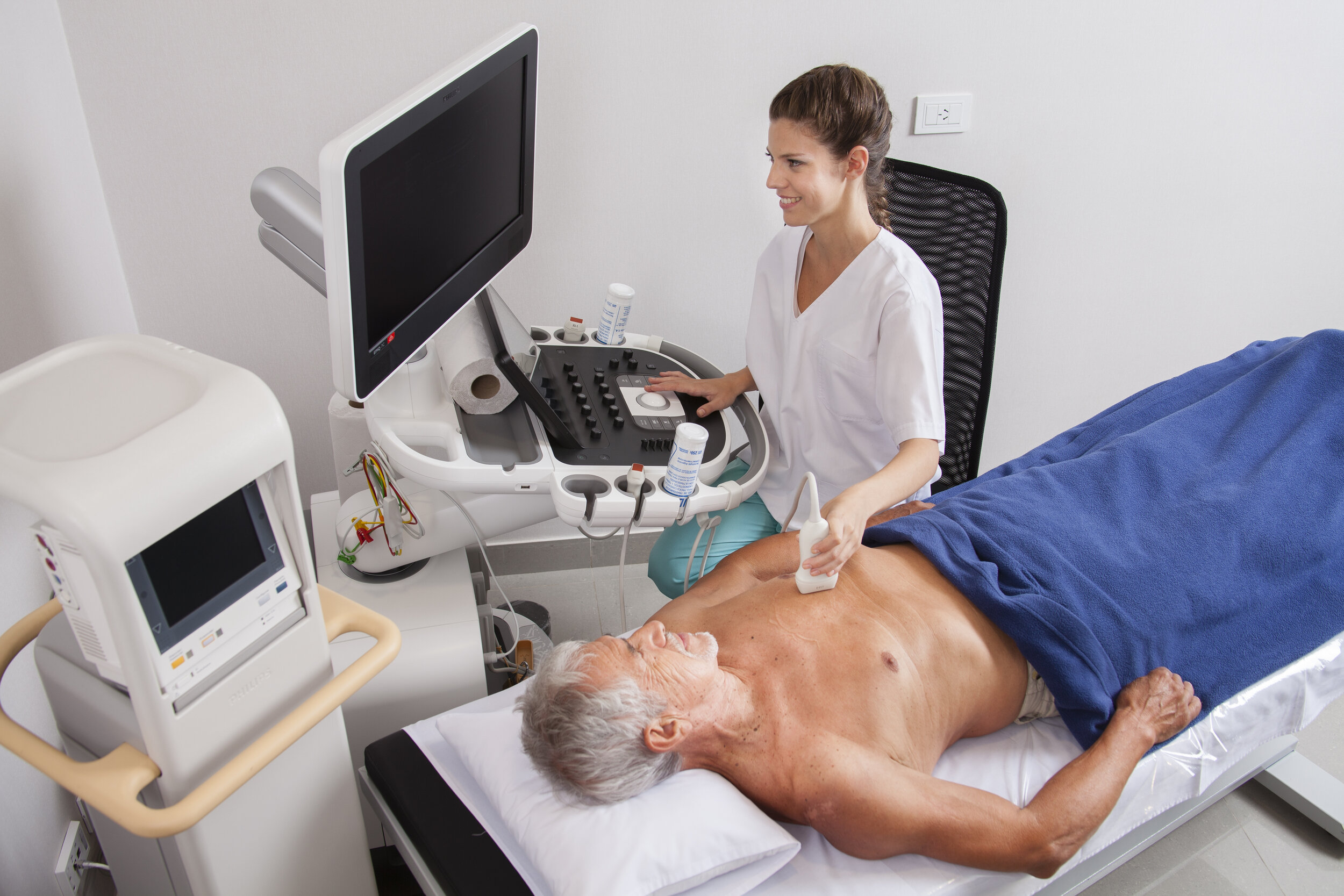
Project brief
The challenge was on supporting ultrasound practitioners on reducing repetitive strain injuries. Bad posture, excessive physical stress, long and overloaded routines are some of the main risk factors for ultrasound professionals. These factors can lead to physical pain, musculoskeletal disorders, and chronic injuries on the neck, shoulders, elbow, wrists, back, and torso.
Approach
To obtain contextual insights, observational studies were conducted as well as multiple interviews among ultrasound practitioners from different Dutch hospitals. This resulted in a better understanding of their needs and work conditions. It was found that the majority of the practitioners suffered from chronic muscle-skeletal pain caused by lack of rest within examinations, and habituation to the pain and physical constrains derived from the working routine. The most affected area was the arm, with critical complications in the joint of elbows and shoulders.
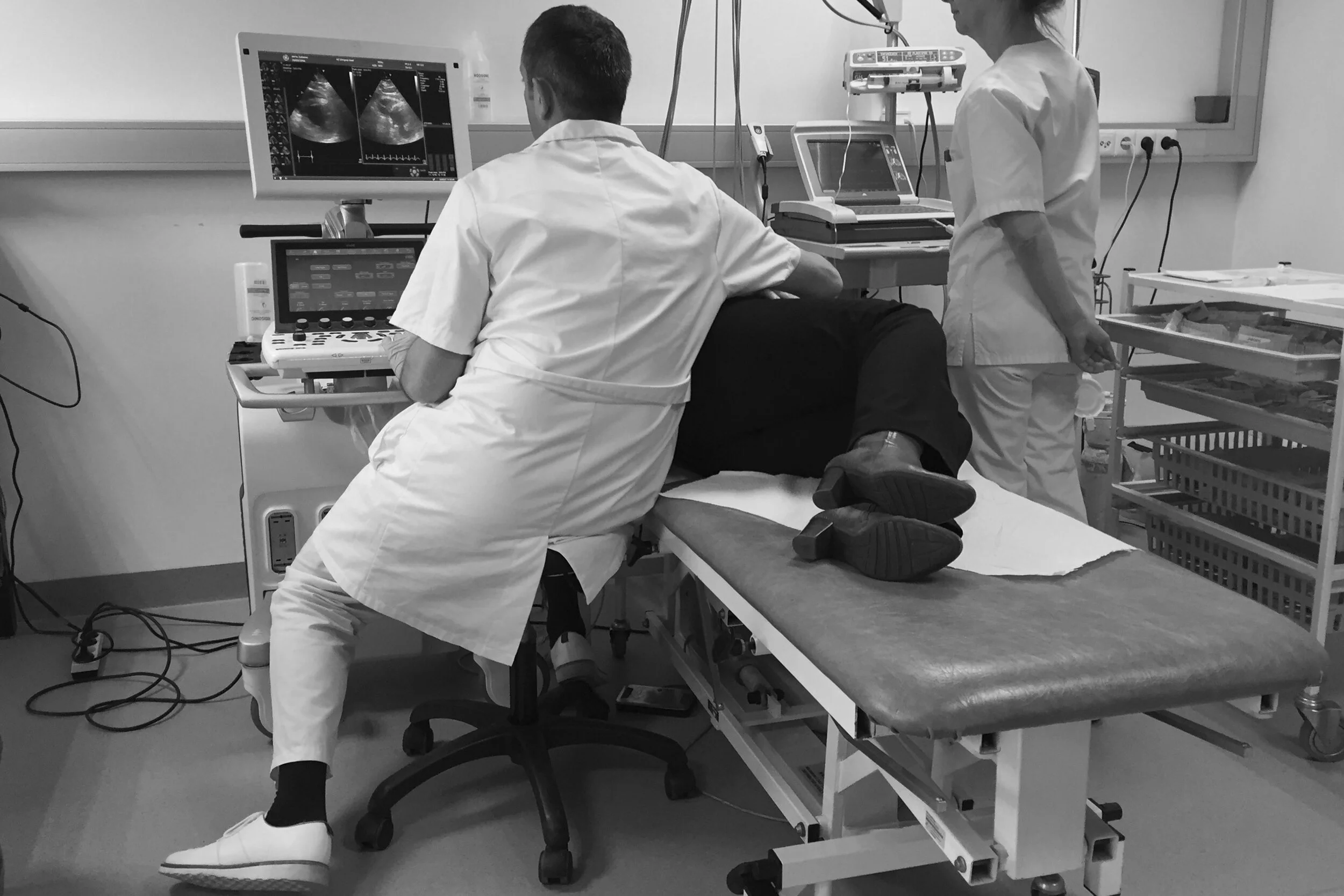


From insights to realisation
Following an iterative design process, composed of co-creation sessions and validation studies, the most optimal system to track, monitor, and deliver posture-related feedback to the practitioners was defined. Several low-fi and functional prototypes were developed and tested together with the final-users and within the context of use.
This process resulted in the development of Ergonode, a fully functional and wireless wearable device that implements EMG sensors and an IMU to track shoulder alignment and muscle activation on the forearm. The data was gathered via Bluetooth and presented to the user through a computer-based user interface.


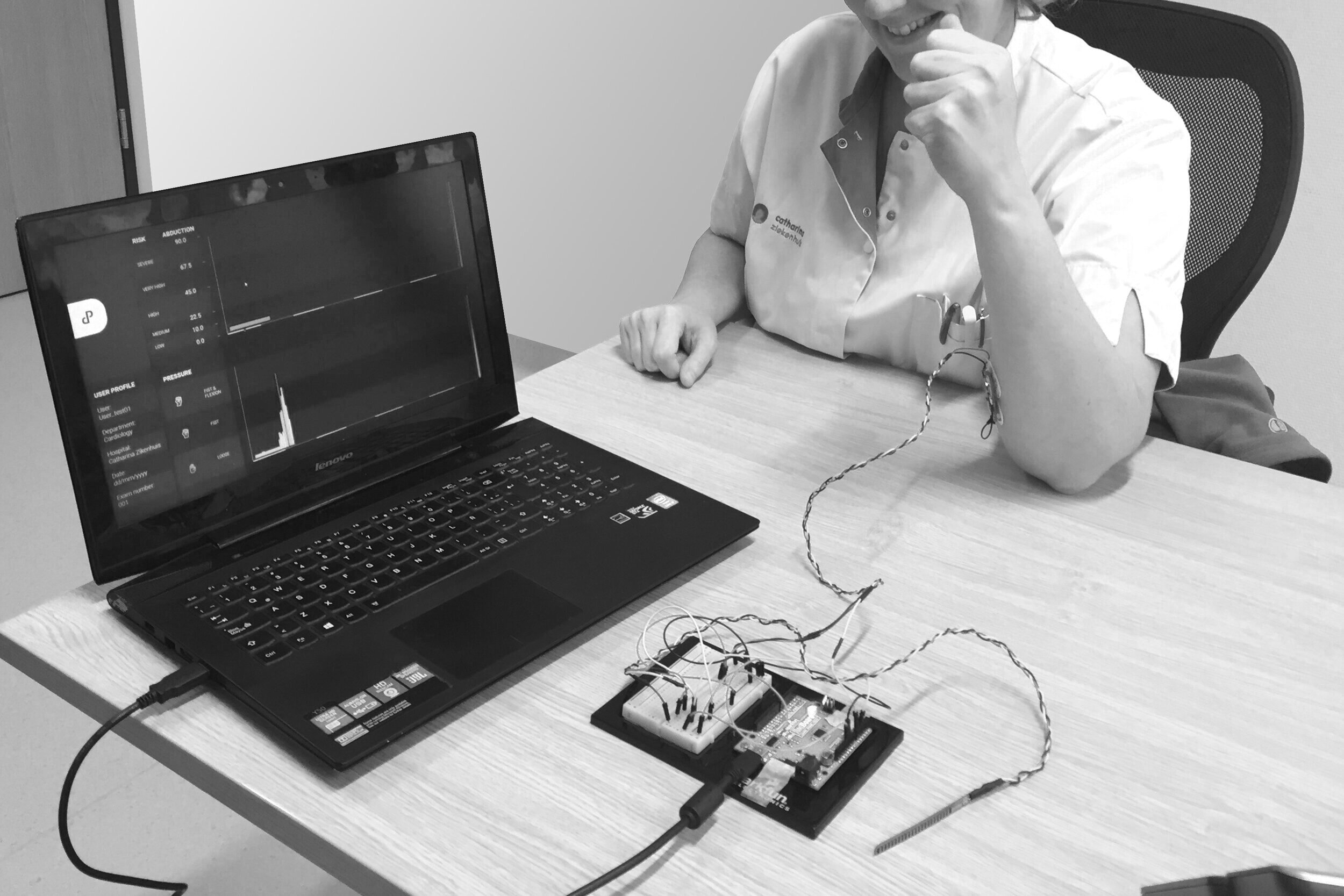
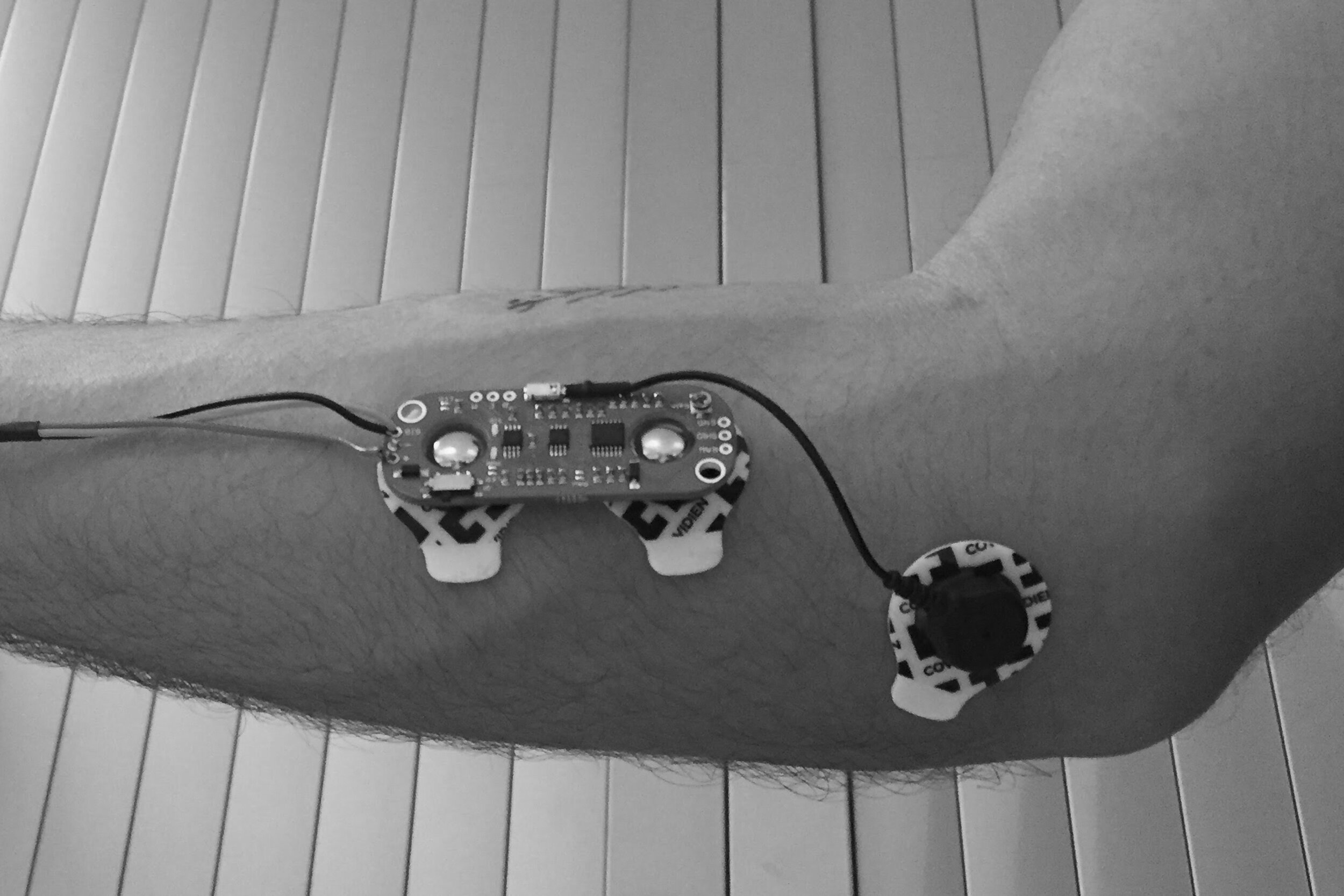


Ergonode
Ergonode wearable system integrates an electromyography sensor to monitor muscle activation associated with wrist flexion and fist movements, and an inertial motion unit (IMU) to monitor the shoulder (abduction) and torso position.
Based on posture habits and workload patterns, the system estimates overloaded and high-risk routines. That information is used to deliver real-time haptic feedback for bad posture awareness, and posture adjustment, as well as promotes mini-breaks during the ultrasound procedures.
Posture-related information is compiled on a digital interface, offering more details of personal posture behavior, and an overview of posture habits over time.
